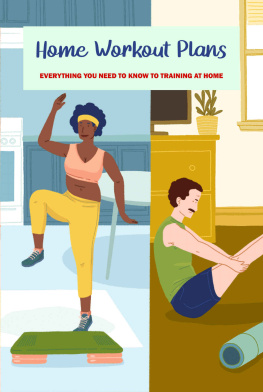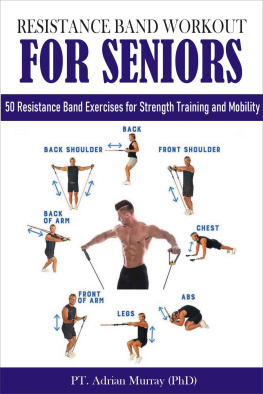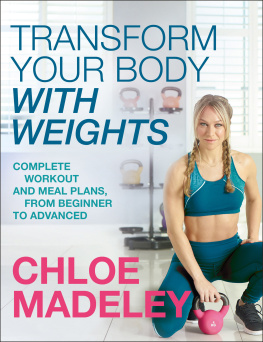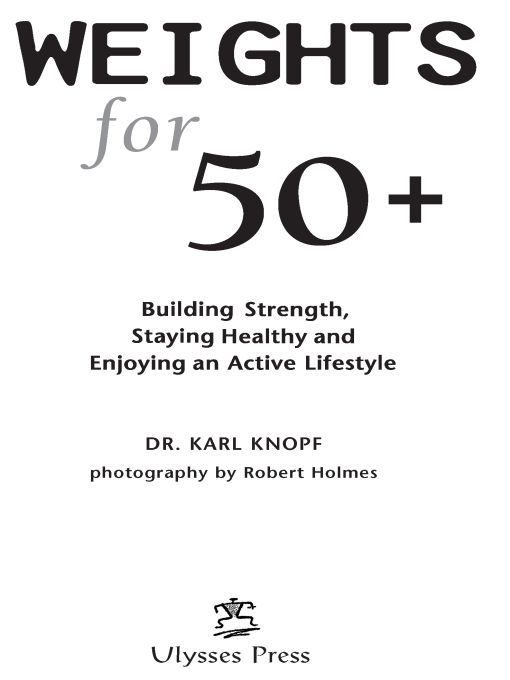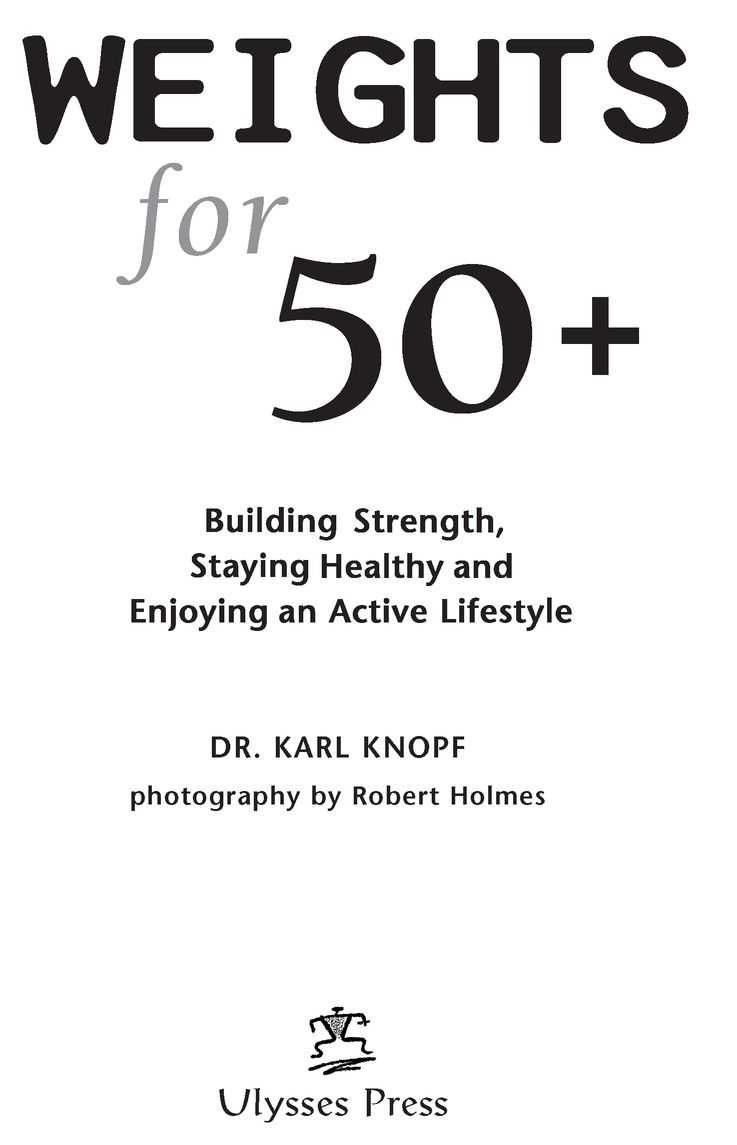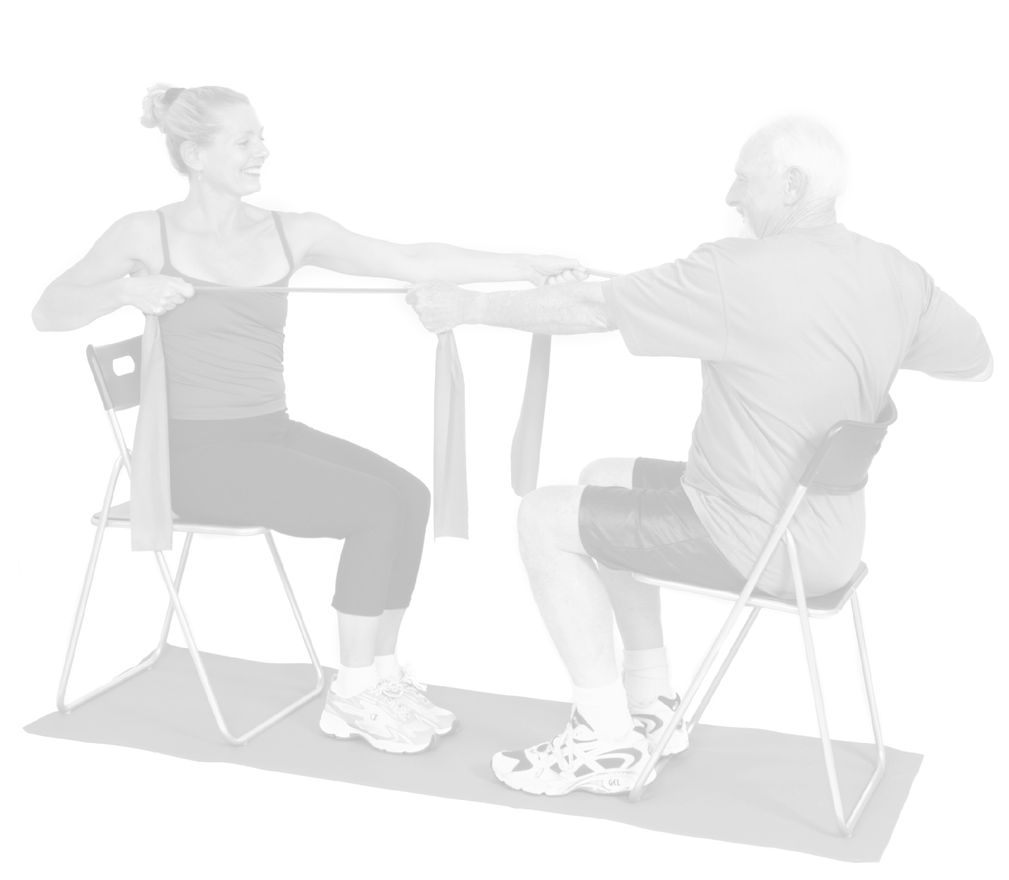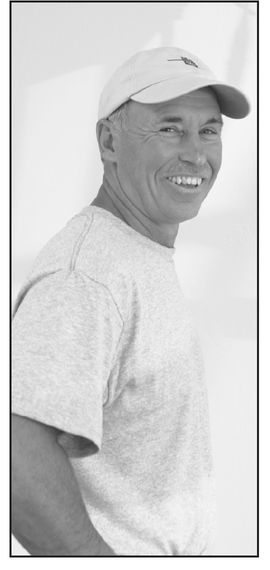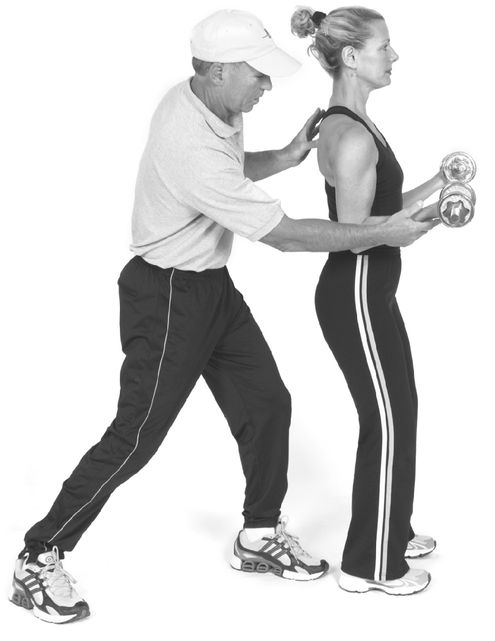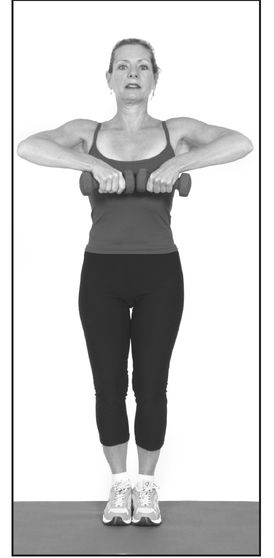Table of Contents
part one:
getting started
grow strong, not old
Many people let their age exclude them from being the healthiest and fittest person they can be.
Everyday we have the ability to determine how we want to age. To a large extent how well we age has to do with how we eat, sleep, think and move. Our attitude towards aging largely influences how we age.
If you view the process as a time of decline and frailty, you will be fighting each birthday rather than making every year the best year of your life. Also, if you allow advertisers to make you feel bad about living, then you will continue to deny aging rather than embrace it.
One of my favorite 90-plus students told me she loves aging, especially when you consider the alternative. A dynamic 100-year-old woman in my class said that the best part of hitting the century mark is that there is less peer pressure. When asked whether she cares about her wrinkles, she said, Heck no! I have earned every one of them. Another student once told me, Age is just a number and mine is not listed. A 75-year-old student told me that she didnt care about her age because she feels better and more empowered than ever before. She went on to say that how you feel and act is more important than the numbers of candles on a cake and that being active everyday makes her feel better than the day before.
The people who live long and thrive often report that the success of their aging was largely influenced by their positive attitude, being physically active, eating healthily, moderating their consumption of alcohol, avoiding cigarettes, getting adequate rest and sleep and staying socially engaged. If we want society to change its attitude about aging, we need to start bragging about our age rather than denying it. We also need to be proactive and take steps today to positively influence our health.
More and more research supports the conclusion that we can control our own aging. Many scientists believe that with a healthy lifestyle, we may be able to turn back the biological clock 10 to 20 years or at least slow it down. A healthy active person ages approximately half a percent a year, compared to an inactive person with poor health habits, who ages at approximately two percent a year. If you do the math, you can see how a healthy lifestyle can make a significant difference over a period of a lifetime. Fortunately for all of us, the fountain of youth has been discovered. It is not found in a bottle or in a pill or even in an injection. It is found in a daily dose of prudent exercise that includes strength training.
As we grow older, we expect certain changes to occur. We may notice that we gain weight, have less energy and are not as strong as we once were and have less muscle tone. Aging is not to blame! Most of the time the blame falls squarely on an inactive lifestyle. Regular exercise is the single most important thing we can do to retard the effects of aging. How we age has little to do with our chronological age but rather our physiological age. What we do today plays a significant role in how we will age tomorrow.
In the end we can not become what we need to be by remaining what we are.
Max De Pree
Author Karl Knopf makes some adjustments.
fit for life
Hippocrates said it so well more than 2000 years ago: All parts of the body, which have function, if used in moderation and exercised to which each is accustomed, become thereby healthy and well developed and age slowly. But if left idle become liable to disease, defective in growth and age quickly. Mickey Mantle said the same thing, but in a simpler way: If I knew I was going to live this long I would have taken better care of myself.
Strength training is the single most critical step you can take to retard aging. The human body has over 400 voluntary musclesits a machine that was designed for movement. Yet, in this technology-driven age, we consistently invest in products that reduce our need to move. Do you remember the days when you had to get out of the car to open the garage door? Or get up to change the TV channel? Even these simple bouts of physical activity required muscular strength. Unfortunately, all these wonderful labor-saving devices that we use daily hasten the process of sarcopenia (age-related loss of muscle mass and strength). To keep our muscles from withering away from disuse, we must challenge them frequently.
Young people frequently exercise to look better. In middle age, people often exercise for the health of it. However, in order to age well and remain fully independent, we need to exercise for the function of it. Too often, older people find that many of the activities of daily living that they once found simple have become challenging. Many of my older students joined my classes because steps seemed higher than they used to be, chairs were harder to get out of, and even the act of lifting a bag of groceries caused strain. Much of the decline often associated with normal aging has more to do with a loss of muscular strength and function than the number of trips around the sun.
A great deal of strength is lost between the ages of 30 and 50. If a person participates in a regular strength-training routine, the loss of strength can be minimized. Fortunately, it is never too late to turn your fitness life around. Numerous studies have proven that both men and women in their 80s and 90s can regain their strength and function by engaging in sensible and regular strength training; in cases of arthritis, several studies have shown that when the muscles around an arthritic joint get stronger, the load placed on that joint decreases. I have personally witnessed a woman in my strength class lose about 30 pounds and dramatically improve her ability to get around; she no longer uses a walker and can pick things up off the floor easily, which she was unable to do a year ago. Today she has more energy and is having a lot more fun than she ever remembered. All these positive results can be derived by a slight reduction in calories to lose weight slowly and permanently, combined with a daily dose of strength training and aerobic exercise.
If You Rest, You Rust
People who do not engage in a regular strength-training routine throughout their lives will lose 40 to 50 percent of their muscle mass and 50 percent of their muscular strength by age 65. This loss is not without consequencethese people can become so weak that doing simple daily activities becomes very difficult. A recent study revealed just how much negative impact a sedentary lifestyle can have on aging. The study looked at adults aged 55 to 64 and found that 40 percent of women had a difficult time lifting and carrying 10 pounds; 20 percent of men within this age bracket found the same task difficult. This study also revealed that almost 25 percent of both men and women had a difficult time walking a quarter of a mile briskly. The saddest part of this report stated that by age 65, untrained individuals had lost as much as 80 percent of their strength.



